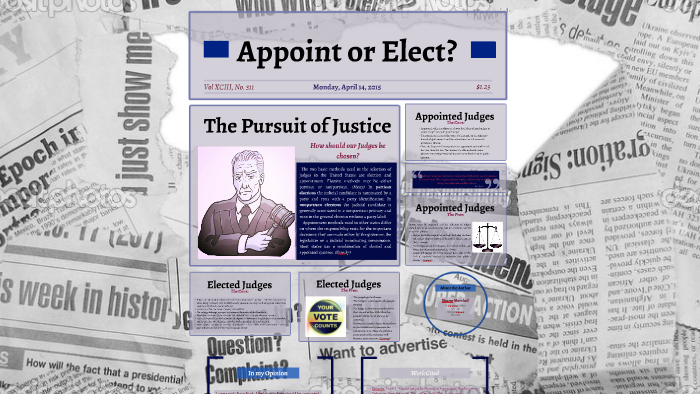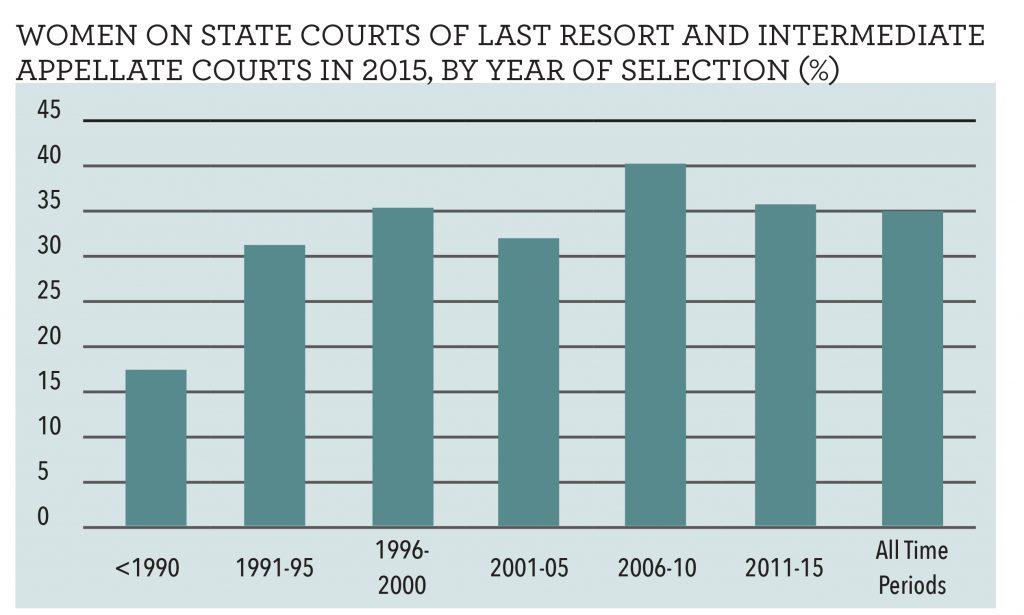In some cases approval from the legislative body is required. Judges are elected by the people and candidates are listed on the ballot without a label designating party affiliation.

Appointing Or Electing Judges By Sharee Marshall
The states governor or legislature will choose their judges.

. The partisan election of Texas judges is a potential disadvantage since the candidates can easily be persuaded by money to choose a party. While the current belief is that a judge may be removed only for the commission of a criminal offense or the. In partisan elections the judicial candidate is nominated by a party and runs with a party identification.
Elective methods may be either partisan or nonpartisan. Should Judges Be Elected or Appointed. The popular election of judges opens up the judicial branch to the same partisan and commercial.
Judges are selected by the state legislature. To choose a selection process because that process has an apparent statistically significant probability of producing judges with desirable views is just as inappropriate as appointing or electing ones political cronies. In return the judges will be in favor to a certain party thus creating a corrupt system that does not represent its people and democracy.
Most opt for a hybrid of elective and appointive positions. The study forthcoming in the American Economic Review looks at how two kinds of selection systems for state court. Judges are appointed by the governor.
In some cases approval from the legislative body is required. Judges are selected by the state legislature. But elections of public officials such as judges may have serious drawbacks.
These methods of selection are. Although electing judges makes intuitive sense in a democracy the appointment method of judge selection most fairly accomplishes the goal of the judicial branch - to read and interpret the law. States that use this method list the political party affiliation of the judge on the ballot.
Although federal judges were appointed and did not face election the Founders made certain that federal judges would be easily removable from office through impeachment a procedure that today is widely misunderstood and rarely used. Appointed without a doubt. Currently 33 states including New York and the District of Columbia choose at least some of their judges via the appointive process known as merit selection.
Judges are appointed by the governor. Partisan and nonpartisan election of judges. One of the methods for electing judges in the states is by partisan election.
We are taught from a young age that the best form of government is one that we the people elect. You left off the third - and best choice -- appointment followed by retention elections. Lower level trial judges should thereafter be appointed to the upper level trial bench based on their experience and merit rather than from elected or appointed party politics.
Judges are elected by the people and candidates are listed on the ballot without a label designating party affiliation. The results suggest that elected judges are more focused on providing service to the voters that is they behave like politicians whereas appointed judges are more focused on their long-term legacy as creators of precedent that is they behave like professionals. No time to be worried about re-election and he or she has a better chance of getting an okay from the local ABA which makes a much bigger difference with appointed judges than elected ones.
Is electing judges the best way. Judges are chosen by a legislative committee based on each potential judges past performance. Judges who handle misdemeanors and lesser civil cases may be elected or appointed.
States choose judges in any of the following ways. The two basic methods used in the selection of judges in the United States are election and appointment. Some states provide only for election of judges.
The appointed judge serves one year then must seek voter approval in a retention election. In support of the election process for state judiciaries the Heritage Foundation stated Clashing views about the proper role of judgesincluding the liberal perspective which sees judges as simply political actors making preferred policy choices in robes means that politics will be part of the judicial selection process unless and until judges return to simply. There are two primary methods of judicial selection.
In the case of state court judges for example elected judges are far more variable in their sentencing than appointed judges according to a new study. In addition elected judges do not appear less independent than appointed judges. Judges are elected by the people and candidates are listed on the ballot alongside a label designating political party affiliation.
Given that direct democracy allows citizens the most control over their government to elect our judges may seem like the best method of selection. Judges are elected by the people and candidates are listed on the ballot without a label designating party affiliation. Why judges should be appointed not elected Steve Odland Contributor SteveOdland Published 843 AM ET Thu 16 June 2016.
Neither the sovereign nor. Here are a few facts on judicial selection versus election. If the judge wins he or she remains on the bench.
Ties to nurture the growth of decisional law. In total 20 states use partisan elections to elect state supreme court and appellate judges. He or she is less likely to be influenced by party hacks.
Some states hold retention elections to determine if the judge should continue to serve.

Elected Vs Appointed Harvard Law Today

Picking Judges How Judicial Selection Methods Affect Diversity In State Appellate Courts Judicature
0 Comments